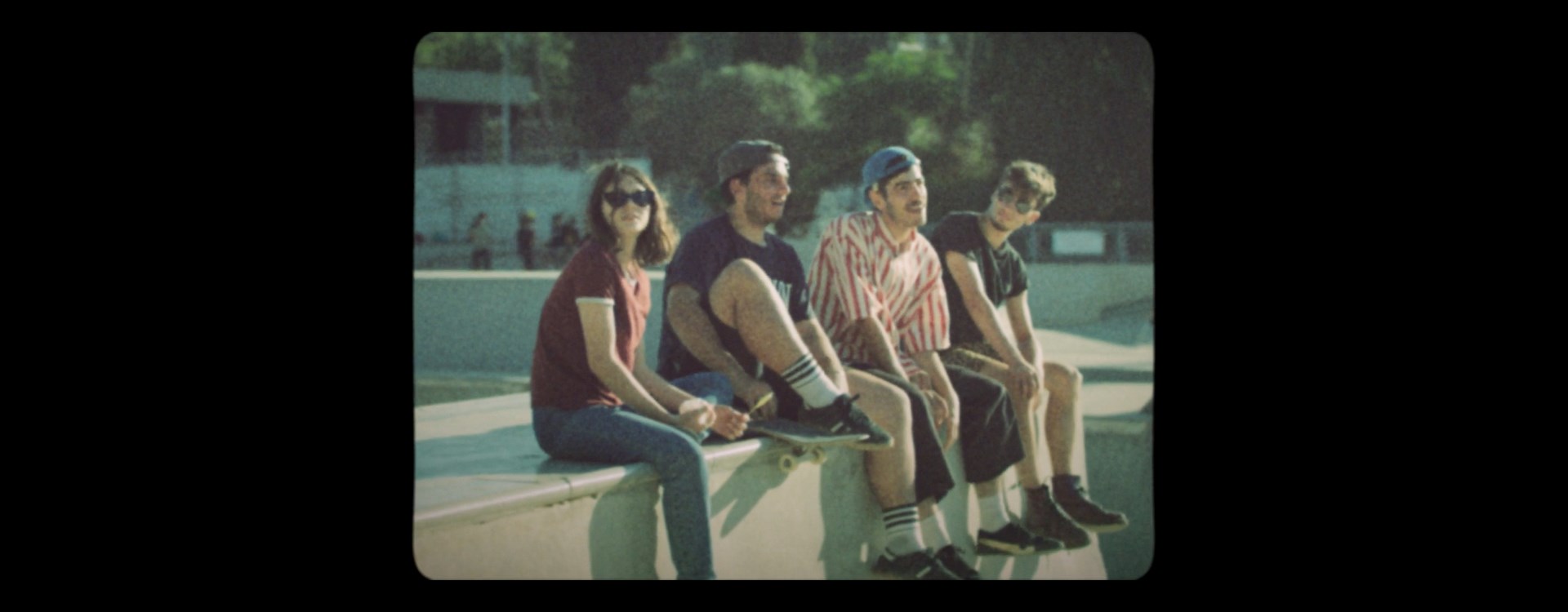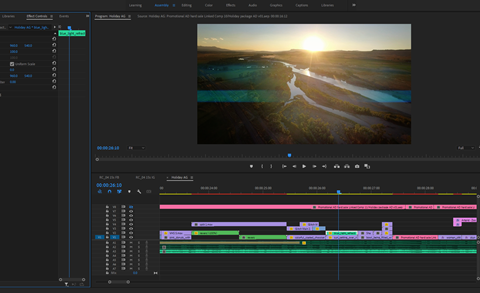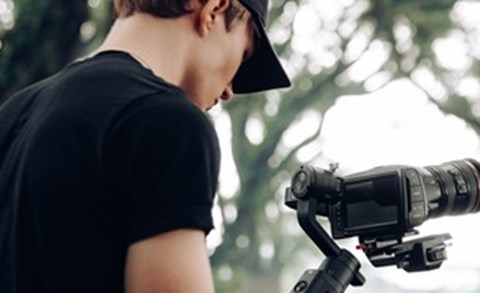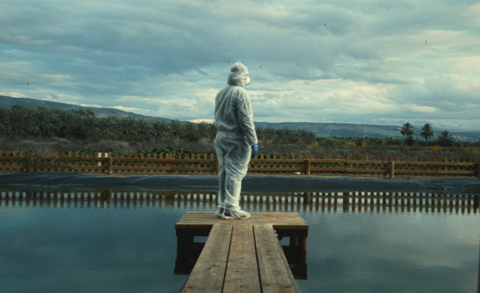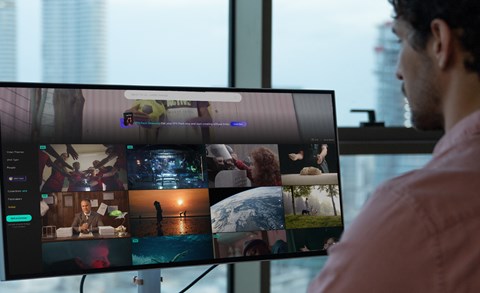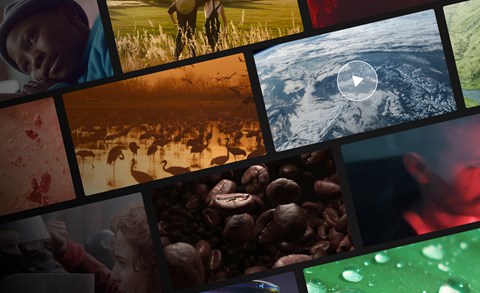‘That image looks a bit grainy’ is something you may hear every now and then while shooting, often in a negative context. In 2021, we tend to want to avoid grain in our shots. Keep the ISO low, open the f-stop wide. That’s the general rule of thumb. However, when it comes to post-production, you’ll often find that many colour grade artists and editors then insist on adding ‘film grain’ back into the image. So, what’s going on here? Below, we dive into what film grain is, why it still matters and how you can easily add film grain texture into your videos using a film grain overlay from Artgrid.
What is film grain?
Let's start with the base question. What is film grain? Originally, film grain was not intentional or created on purpose, it was just a natural part of filmmaking. Without getting too bogged down in the science of why it happens, it was a natural side effect of shooting on chemical film. Whenever you see speckles on the screen, dancing around in random patterns? Those are small particles known as ‘silver halide’ - the primary photosensitive substance used in all celluloid films.
Of course, as technology progressed, these particles became smaller and less visible, up to the point where everything switched to digital filmmaking, and the natural film grain texture disappeared from raw footage altogether.
Why does film grain matter?
So, if technological advances naturally phased out film grain, why is it still important? Well, the simple answer is that it evokes emotion.
We associate film grain texture with older films. Because films and cinema have been around for over a century, film grain is, excuse the pun, ingrained into cinema. So, whenever filmmakers want to give their film a certain tone or evoke certain feelings, a film grain overlay can be a great way to achieve this. Plain and simple, film grain evokes nostalgia.
When we watch footage with a film grain overlay, it takes on a dreamy quality that feels more like shared memory. There’s no real way to explain this other than to say it’s something going on in our subconscious emotions. We can’t help it!
Furthermore, the grittiness that’s associated with film grain can help make your videos feel more natural as if the footage has come straight out of the camera, raw and real. This helps add an extra layer of ‘reality’ to your film. It draws the audience in and makes them feel like they’re a part of the world you’re creating.
Best case examples of film grain
Now that you have an understanding of ‘what is film grain and why does it matter,’ it’s fun to take a look at how it’s used throughout the world of filmmaking.
Firstly, film grain can be great for historical dramas because it evokes those nostalgic feelings. Watching a war movie with a film grain overlay instantly helps transport you back to that time period. Some of the best examples of this can be found in classics like Steven Spielberg’s Saving Private Ryan (1998).
When it came to chasing accuracy and nostalgia for this particular film, Spielberg’s cinematographer Janusz Kamiński even went as far as stripping his camera lenses of their protective coating. Without this, the light enters the camera differently, bouncing around a little and appearing more diffused and soft (without being out of focus). He also went on to put the negative film through a bleach bypass which helped reduce brightness and color saturation. All of this combined to help get them much closer to the cameras used in the 1940s, achieving something that has been hailed as the closest, most accurate portrayal of World War II ever created in cinema.

Similarly, check out Christopher Nolan’s Dunkirk (2017). The subtle use of old film grain texture works particularly well in the aerial dogfights as it evokes memories of a much older film, “The Battle of Britain” (1969), which focused on historic aerial dogfights in World War II.
Of course, it’s not just war films that can benefit from an old film grain texture. Even today, plenty of filmmakers on YouTube utilize film grain texture to achieve a feeling of nostalgia and timelessness.
Chris Burkard’s cycling adventure Long Way Around is a great example of this. The way the film grain overlay is used in combination with Super 8 film and narration really makes this piece feel very timeless.
Similarly, Sam Newton has created plenty of nostalgia in his piece “Things Are Changing”. Again, you see the mix of Super 8 film in there which helps make the film feel like it’s a ‘home video’. The film grain adds tons of nostalgia and makes the piece feel raw and real, which is exactly what Sam was going for.
How to add film grain texture into your video
Okay, you’re sold. You get why film grain matters so much, and now you want to add your own film grain filter or film grain effect into your videos. How do you do this? The process is surprisingly easy!
Firstly, you’ll want to check out the great variety of stock film grain available on Artgrid. Once you’ve found the type of film grain texture that you want to use, go ahead and download it. There are also some great options for vintage videos, if you’re interested.
With your film grain overlay downloaded, head over to your project (we’re using Adobe Premiere Pro in this example), find the clip on your timeline and simply drag and drop the film grain texture onto the video track above it.

As you can see, the film grain overlay then covers your footage. To fix this, head to the effects panel with your overlay selected on the timeline. Scroll down to Blend mode and select the Overlay option.
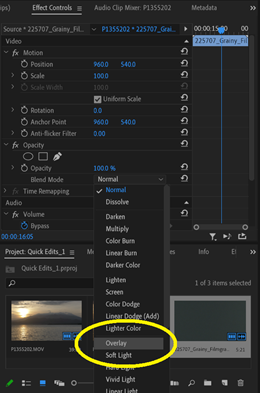
This will change the film grain texture clip so that you can see it overlaying your footage rather than completely blocking it. In this instance, you will notice that the old film grain texture has significantly impacted the footage’s color grade.

To fix this issue, head back to the effects control panel and go to Opacity. Here, you can play around with the opacity level of the grain texture overlay until you’re happy with the results. We found in this particular instance that an opacity of 50% was perfect.

Final thoughts
So, that’s everything you need to know about film grain. From what it is, why it matters, to how you can achieve the look yourself. It’s an important part of any color grade, and once you really understand it, we think you’ll be utilizing it a lot. Furthermore, you can repeat this same editing process with plenty of other video overlays too!
About Josh
Josh Edwards is an accomplished filmmaker, industry writing veteran, storyteller based in Indonesia (by way of the UK) and industry writer in the Blade Ronner Media Writing Collective. He's passionate about travel and documents adventures and stories through his films.
